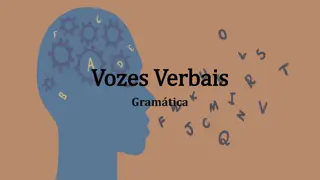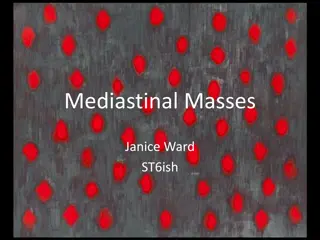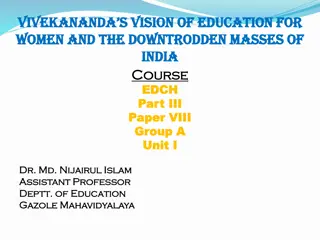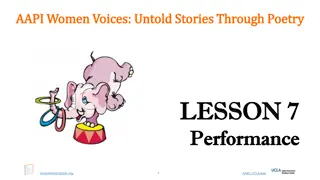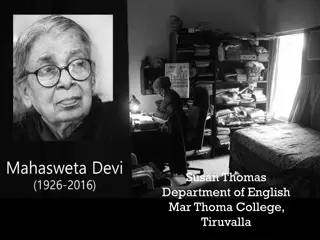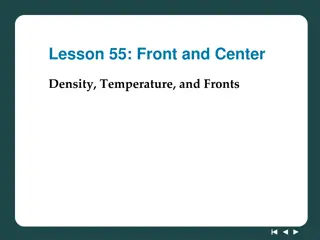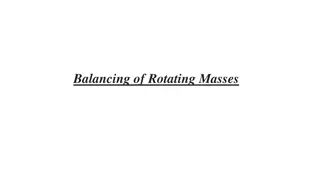Rediscovering Subaltern Voices: History of the Toiling Masses
Efforts are underway to document the history of marginalized communities and highlight their struggles against oppression and injustice throughout time. From ancient Roman slaves to modern-day indigenous uprisings, the voices of the subaltern are being brought to light. Scholars are recognizing the importance of capturing these often overlooked narratives for a more comprehensive understanding of humanity's collective past.
Download Presentation

Please find below an Image/Link to download the presentation.
The content on the website is provided AS IS for your information and personal use only. It may not be sold, licensed, or shared on other websites without obtaining consent from the author. Download presentation by click this link. If you encounter any issues during the download, it is possible that the publisher has removed the file from their server.
E N D
Presentation Transcript
SUBALTERN Attempts are being made to write history of the toiling masses from different angles particularly from the point of view of their subjugation, victimization, oppression etc., Voices of the ordinary masses whose history was never written are heard now all over.
An interest is created among scholars to document such historical events that are important to humanity from the marginalized sections of the society. From the time of Spartacus, the revolutionary of the ancient Roman empire, there have been cries for freedom and against all forms of human rights violations by established powerful socio political structures. Thousands of gladiators protested stoutly against the oppression. Even in India all through the history there have been protests in many forms and different magnitudes.
There were strong protests and rebellions against the British imperialism by the indigenous people and adivasis such as the Mundas, Santals, and others. Such voices are not enunciated and articulated in the past in history sufficiently. Such forms of protest should be highlighted and efforts to be taken to bring them to light. This side of the society also should be known to the world. --- A Brief History of Subalternity David Ludden
Historical Origins: Insurgency, Nationalism, and Social Theory In the last forty years, scholars have produced countless studies of societies, histories, and cultures "from below" which have dispersed terms, methods, and bits of theory used in Subaltern Studies among countless academic sites. Reflecting this trend, the 1993 edition of The New Shorter Oxford English Dictionary included "history" for the first time as a context for defining subaltern. The word has a long past. In late-medieval English, it applied to vassals and peasants. By 1700, it denoted lower ranks in the military, suggesting peasant origins.
By 1800, authors writing from a subaltern perspective published novels and histories about military campaigns in India and America; and G.R.Gleig (1796-1888), who wrote biographies of Robert Clive, Warren Hastings, and Thomas Munro, mastered this genre. The Great War provoked popular accounts of subaltern life in published memoirs and diaries; and soon after the Russian Revolution, Antonio Gramsci (1891-1937) began to weave ideas about subaltern identity into theories of class struggle.
Gramsci was not influential in the English-reading world, however, until Raymond Williams promoted his theory in 1977, well after translations of The Modern Prince (1957) and Prison Notebooks (1966) had appeared.14 By 1982, Gramsci s ideas were in wide circulation.15 Ironically, though Gramsci himself was a Communist activist whose prison notes were smuggled to Moscow for publication and translation, scholars outside or opposed to Communist parties (and to Marxism) have most ardently embraced his English books (as well as those of the Frankfurt School).
Subaltern Studies deployed some of Gramsci's ideas at a critical juncture in historical studies. By the late 1970s, a rapid decline in state-centred historical research had already occurred and social history "from below" was flourishing. E.P.Thompson s 1963 book, The making of the English working class, is often cited as an inspiration for the growing number of "bottom up" studies of people whose history had been previously ignored. By 1979, women s history was popular enough in the U.S. to merit source books and guides to research In 1982, Eric Wolf published what can be called the first global history from below. In South Asia, the history of subaltern groups was thriving, though they were not called that then. In the seventies, two new journals featuring studies of South Asian peasants had begun publishing in the US and UK. Hundreds of titles on rural history had appeared. In 1976, Eric Stokes announced the "return of the peasant" to colonial history. Guides to sources promoted more local research.
Subaltern Studies1 began its impressive career in England at the end of the 1970s, when conversations on subaltern themes among a small group of English and Indian historians led to a proposal to launch a new journal in India. Oxford University Press in New Delhi agreed instead to publish three volumes of essays called Subaltern Studies: Writings on South Asian History and Society. These appeared annually from 1982 and their success stimulated three more volumes in the next five years, all edited by Ranajit Guha.
When he retired as editor in 1989, Ranajit Guha and eight collaborators2 had written thirty-four of forty- seven essays in six Subaltern Studies volumes, as well as fifteen related books.3 By 1993, the group he remembers as originally being an assortment of marginalized academics 4 had sufficient international prestige that a Latin America Subaltern Studies Group was inspired "by this interdisciplinary organization of South Asian scholars led by Ranajit Guha. "5 Today, ten (and counting) Subaltern Studies volumes have appeared. They include essays by forty-four authors whose allied publications approach two hundred, including translations in several languages,6 yet the core group still includes eight founders7 and Ranajit Guha s intellectual driving force 8 is still visible.
Readings of Subaltern Studies began in India, where writing about Subaltern Studies began in book reviews. At first, each volume in the series was reviewed separately as collection of essays, but by 1986, an accumulation of writing inside and outside the project had established a distinctive school of research whose adherents came to be called "subalternists" or simply, "subalterns. " Their seminal essays appeared in paperback in 1988, when Selected Subaltern Studies was published by Oxford University Press in New York and Oxford, edited by Ranajit Guha and Gayatri Chakravorty Spivak, with a foreword by Edward Said. By 1990, Burton Stein could cite the growing interest in Subaltern Studies as one sign that the 1980s were "a decade of historical efflorescence" in South Asian studies. In the 1990s, Subaltern Studies became a hot topic in academic circles on several continents; a weapon, magnet, target, lightning rod, hitching post, icon, gold mine, and fortress for scholars ranging across disciplines from history to political science, anthropology, sociology, literary criticism, and cultural studies.


